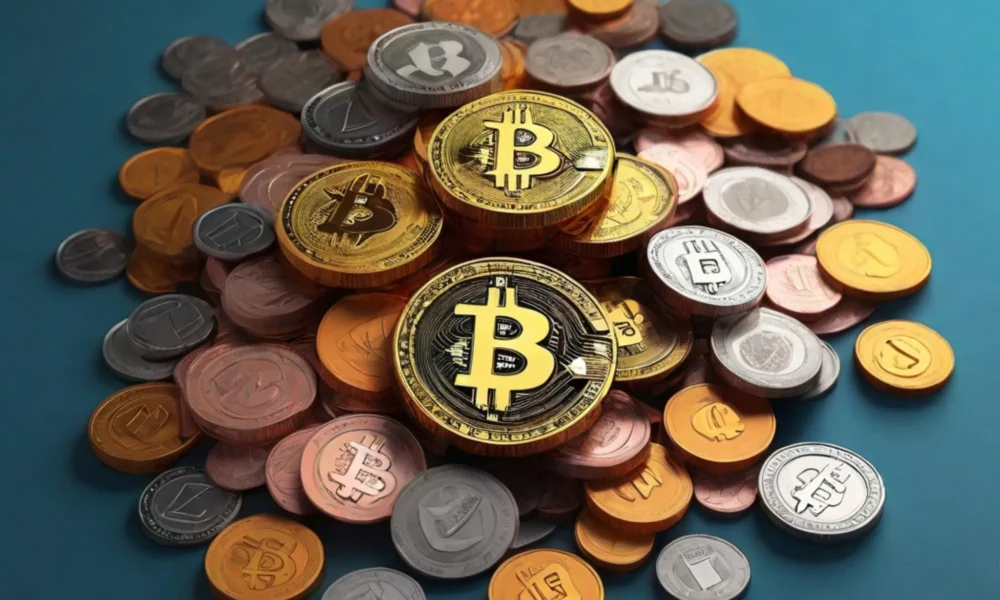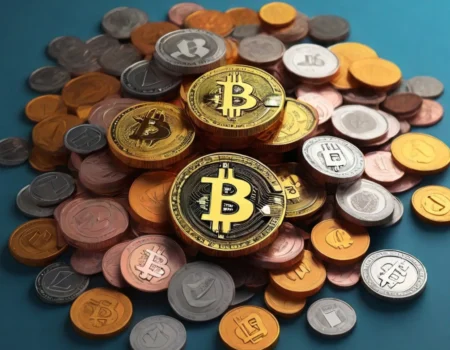Have you ever felt baffled by Bitcoin, Ethereum, or Dogecoin, wondering what the craze is all about? You’re not alone! Navigating the exciting world of cryptocurrency can feel like cracking a coded message, but fear not!
This blog serves as your cryptocurrency basics guide, unraveling the complexities and presenting a crypto explained journey in simple, jargon-free language. Buckle up, and let’s embark on this introduction to cryptocurrency together!
Understanding the Foundation: Cryptocurrency 101
At its core, cryptocurrency is a digital payment system, similar to a secure online version of cash. It operates independently of traditional banks and governments, relying on the revolutionary blockchain technology to maintain and validate transactions securely.
This decentralization concept empowers a network of computers worldwide to verify and record transactions, ensuring transparency and resistance to manipulation.
Crypto History: From Bitcoin to Beyond
Bitcoin, the first major cryptocurrency, emerged in 2009. Since then, thousands of others have been created, each with its unique purpose and features.
The Blockchain Technology
Imagine a massive, public ledger where everyone can see every transaction. That’s blockchain in a nutshell. It acts as a tamper-proof ledger, meticulously documenting every transaction for a specific cryptocurrency in chronological order.
These transactions are organized into blocks, creating an unalterable and transparent history.
Fancy codes safeguard transactions in cryptocurrencies. Think of it as sending a top-secret letter only the intended recipient can decode. This cryptographic layer bolsters security, making it a cornerstone of how crypto technology works.
Smart Contracts and DApps
Smart contracts are self-executing agreements coded to automatically enforce terms when specific conditions are met. Operating on decentralized platforms like Ethereum, they eliminate the need for intermediaries, enhance security, and ensure transparent and tamper-resistant execution of contractual obligations.
Decentralized Applications, or DApps, leverage blockchain technology, particularly smart contracts, to run on decentralized networks. Examples include Cryptokitties, a digital collectibles game, Uniswap, a decentralized exchange, and MakerDAO, a decentralized finance protocol.
How Transactions Are Verified
The process of validating transactions and adding them to the blockchain is known as mining. Miners use powerful computers to solve complex mathematical puzzles, and the first one to solve it gets the right to add the next block of transactions.
Some cryptocurrencies, like Bitcoin, are “mined” by powerful computers solving complex mathematical equations. This process helps verify transactions and create new coins, which are then released into circulation.
It’s like finding gold nuggets in the digital world, but instead of a pickaxe, you use computing power!
How Transactions Are Verified
The process of validating transactions and adding them to the blockchain is known as mining. Miners use powerful computers to solve complex mathematical puzzles, and the first one to solve it gets the right to add the next block of transactions.
Some cryptocurrencies, like Bitcoin, are “mined” by powerful computers solving complex mathematical equations. This process helps verify transactions and create new coins, which are then released into circulation.
Crypto for Beginners: Getting Started
Ready to get started with cryptocurrency? Your first step is acquiring a digital wallet, essentially your crypto bank account. Think of it as your personal vault for these digital coins.
Choosing a Cryptocurrency Wallet
Guard your wallet diligently by protecting your private keys and seed phrases. These are akin to your password and backup password, so treat them with utmost importance.
Buying and Selling on Exchanges
Exchanges serve as online marketplaces where you can buy and sell cryptocurrencies. The process is similar to shopping online, making it a user-friendly experience. Popular options include Coinbase and Binance.
Remember, you can also use cryptocurrency for certain online purchases, although widespread adoption compared to traditional methods is still evolving.
This guide has hopefully provided a clear and crypto explained roadmap for beginners. Remember, the cryptocurrency world is dynamic, so staying informed and conducting your own research is crucial before making any investment decisions.






No Comment! Be the first one.